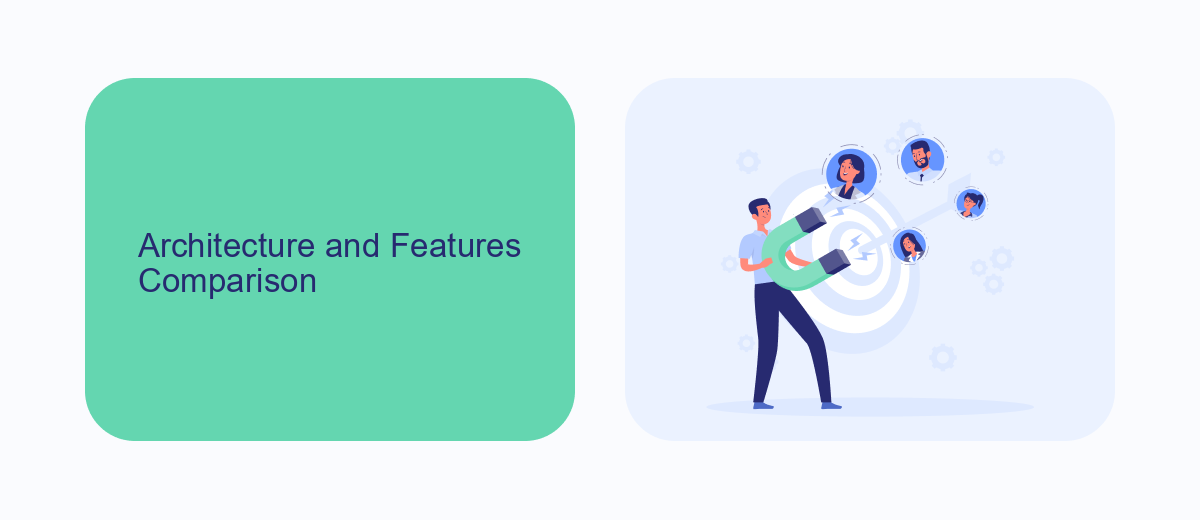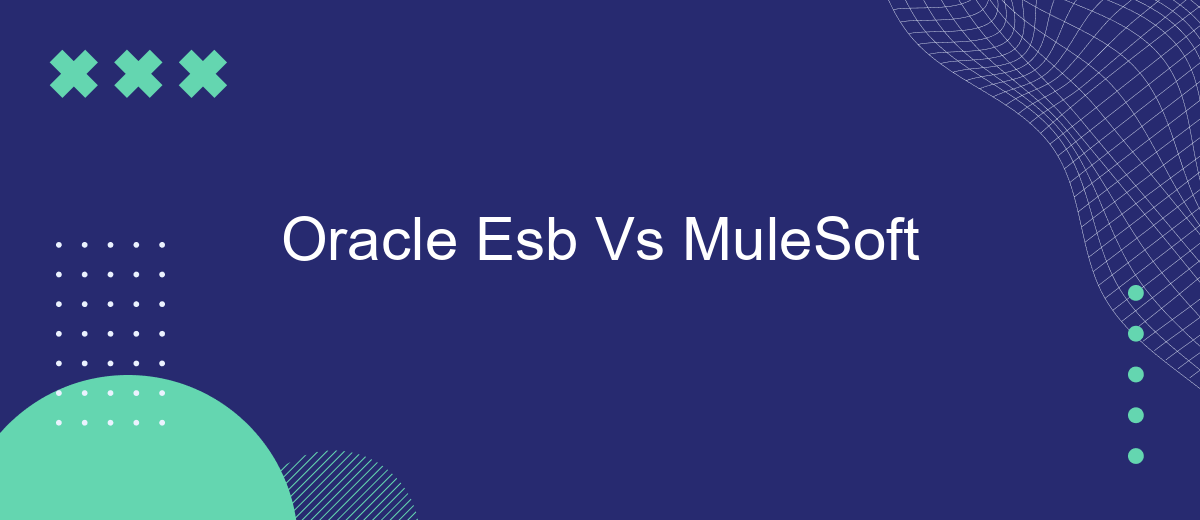Choosing the right Enterprise Service Bus (ESB) is critical for seamless integration and efficient data flow within an organization. Two popular options in the market are Oracle ESB and MuleSoft. This article aims to compare these two platforms, examining their features, performance, and suitability for various business needs, to help you make an informed decision for your enterprise integration strategy.
Introduction
In today's fast-paced digital landscape, businesses require robust and efficient solutions to manage their integrations and streamline operations. Two prominent players in the integration platform as a service (iPaaS) market are Oracle ESB and MuleSoft. Both platforms offer unique features and capabilities that cater to different business needs, making the choice between them a critical decision for many organizations.
- Oracle ESB: Known for its comprehensive suite of integration tools and strong support for enterprise-level applications.
- MuleSoft: Valued for its flexibility, ease of use, and extensive API management capabilities.
- SaveMyLeads: A service that simplifies the process of connecting various applications, enhancing the efficiency of data transfer and automation.
This article aims to provide an in-depth comparison of Oracle ESB and MuleSoft, highlighting their strengths and weaknesses to help you determine which platform is best suited for your business needs. Understanding these differences is crucial for making an informed decision that will support your organization's growth and operational efficiency.
Architecture and Features Comparison

Oracle ESB and MuleSoft offer distinct approaches to enterprise service bus (ESB) architecture and features. Oracle ESB is part of the Oracle SOA Suite, providing a robust, integrated platform for connecting, mediating, and managing interactions between services and applications. It leverages Oracle's extensive middleware capabilities, offering strong support for complex, enterprise-grade integrations. Key features include comprehensive security, scalability, and a rich set of adapters for various enterprise applications and protocols.
On the other hand, MuleSoft's Anypoint Platform offers a more flexible and modern approach to ESB. It is designed with a focus on API-led connectivity, enabling seamless integration across cloud and on-premise environments. MuleSoft provides a unified platform for building, deploying, and managing APIs and integrations. Notable features include a user-friendly interface, extensive pre-built connectors, and robust support for microservices architectures. Additionally, tools like SaveMyLeads can be integrated with MuleSoft to simplify lead management and automate workflows, enhancing overall efficiency and productivity in managing integrations.
Industry Use Cases

Both Oracle ESB and MuleSoft are widely utilized across various industries to streamline and enhance their integration processes. They help organizations connect disparate systems, automate workflows, and ensure seamless data exchange.
- Financial Services: Banks and insurance companies use these platforms to integrate their core banking systems with customer relationship management (CRM) tools, ensuring real-time data synchronization and improved customer service.
- Healthcare: Hospitals and clinics leverage these solutions to connect electronic health records (EHR) with billing systems and patient management software, enhancing operational efficiency and patient care.
- Retail: Retailers utilize these integration tools to link their e-commerce platforms with inventory management and supply chain systems, ensuring accurate stock levels and timely order fulfillment.
- Manufacturing: Manufacturers integrate their enterprise resource planning (ERP) systems with production management software to optimize production schedules, reduce downtime, and increase overall productivity.
In addition to these industry-specific use cases, services like SaveMyLeads can further simplify the integration process by automating lead data transfers between various platforms, ensuring businesses can respond to potential customers quickly and efficiently. This added layer of automation is particularly beneficial for marketing and sales teams looking to streamline their workflows and improve lead management.
Advantages and Disadvantages

When comparing Oracle ESB and MuleSoft, it's essential to consider their respective advantages and disadvantages. Oracle ESB, part of Oracle's suite of integration tools, is known for its robust performance and seamless integration with other Oracle products. MuleSoft, on the other hand, is favored for its flexibility and extensive support for various protocols and APIs.
Oracle ESB offers strong security features and is highly scalable, making it suitable for large enterprises with complex integration needs. MuleSoft provides a more developer-friendly environment with its Anypoint Platform, which simplifies the integration process and supports a wide range of connectors.
- Oracle ESB: Robust performance, seamless Oracle integration, strong security, high scalability.
- MuleSoft: Flexibility, extensive protocol and API support, developer-friendly, wide range of connectors.
Both platforms have their strengths and weaknesses. Oracle ESB might be more suitable for enterprises already invested in Oracle's ecosystem, whereas MuleSoft's flexibility and ease of use make it a strong contender for diverse integration scenarios. Services like SaveMyLeads can further streamline the integration process, offering pre-built connectors and automation capabilities to enhance efficiency.
Conclusion
In conclusion, both Oracle ESB and MuleSoft offer robust solutions for enterprise service bus (ESB) needs, each with its unique strengths. Oracle ESB excels in environments already entrenched in Oracle's ecosystem, providing seamless integration and advanced features tailored for Oracle applications. On the other hand, MuleSoft stands out for its versatility and ease of use, making it a preferred choice for diverse IT landscapes and those seeking a more flexible, cloud-native approach.
When deciding between Oracle ESB and MuleSoft, it is crucial to consider the specific requirements of your integration projects. For instance, tools like SaveMyLeads can complement these platforms by automating lead data transfers, thereby enhancing overall efficiency. Ultimately, the choice will depend on your existing infrastructure, budget, and long-term integration goals. Both platforms are capable of addressing complex integration challenges, ensuring streamlined operations and improved business agility.
- Automate the work with leads from the Facebook advertising account
- Empower with integrations and instant transfer of leads
- Don't spend money on developers or integrators
- Save time by automating routine tasks
FAQ
What are the key differences between Oracle ESB and MuleSoft?
Which platform is more cost-effective for small to medium-sized businesses?
How do these platforms handle API management?
Can I integrate third-party applications with both Oracle ESB and MuleSoft?
Are there services available to help implement these integration platforms?
Would you like your employees to receive real-time data on new Facebook leads, and automatically send a welcome email or SMS to users who have responded to your social media ad? All this and more can be implemented using the SaveMyLeads system. Connect the necessary services to your Facebook advertising account and automate data transfer and routine work. Let your employees focus on what really matters, rather than wasting time manually transferring data or sending out template emails.

